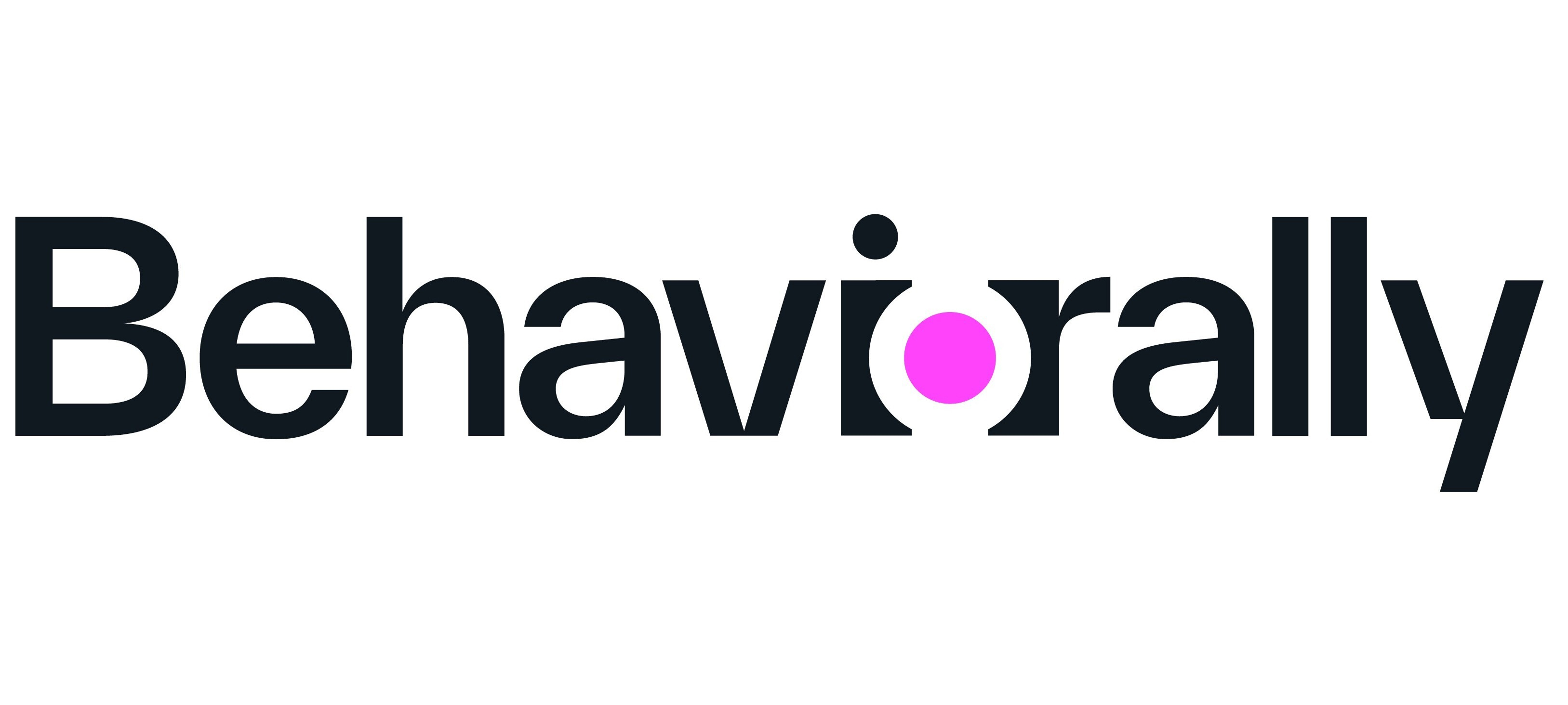Maximizing Customer Feedback Strategy: Essential Techniques to Improve Customer Experience
73% consumers point to customer experience as a crucial factor in their purchase. But, only 49% get the experience they expect. The reason for this is simple. Brands overlook customer feedback, and end up paying the price. Today, customer feedback is more important than ever before.The customer's voice is the wheel steering the ship of business success. If you ignore it, it is like sailing the seven seas without a compass.Every customer has an audience, and their opinions have an influence. It's no longer about what you say about your brand; it's what they say that counts. About 65% of buyers believe good customer experience to be more influential than advertisements.Feedback from customers lets you understand how they feel about the brand. It is the north star in your quest to maximize customer experience. And don’t forget, feedback isn't about collecting—it’s about connecting. Ever noticed how some brands have fans so loyal they’d walk through fire for them? That's no miracle. It’s the result of listening and implementing feedback, which turns customers into advocates armed with hashtags. This article isn't another scroll in the vast library of the internet. Think of it as your guide to the customer's heart, and better brand experience. Let's set on our journey to help you make the most of your customer feedback!
Benefits of Customer Feedback
89% of companies see customer experience as a key factor in driving customer loyalty and retention. And guess what the backbone of an epic customer experience is? Customer feedback! Now, why is customer feedback more precious than the crown jewels? Simple. It's like having a crystal ball that works. It gives you insider info on what customers love, what makes them want to pull their hair out, and what they wish they had but don't. Customer feedback helps you tailor your products and services. It lets you maximize customer experience to meet, and even exceed, customer expectations.
Customer Feedback is Important
Imagine throwing a party and not finding out if your guests had a good time. You'd end up serving the same stale chips and playing the same cheesy music at every party. It may eventually be the reason why people don't come.
Feedback is your party-planning guru. It tells you to ditch the chips for gourmet hors d'oeuvres and swap the accordion tunes for some groovy jazz.
Customer feedback can help you make adjustments that turn casual buyers into raving fans. And we all know how important loyal customers are. They're more likely to return, spend more, and sing your praises to anyone who'll listen.
Customer feedback is like gold for businesses. It's the secret sauce that fuels improvement and growth. Feedback allows customers to voice their opinions and experiences. It helps businesses understand what they're doing well and where they can do better.
Whether it's a suggestion for a new feature or pointing out a flaw in the service, feedback to improve is invaluable. But it's not just about making tweaks here and there. Customer feedback also builds trust and strengthens relationships.
When customers see that their opinions matter, they're more likely to stick around. That's why customer feedback is valuable beyond measure. Every piece of feedback you collect is a nugget of insight, guiding your business toward success.
From "Meh" to "Wow"
But wait, there's more! Feedback isn’t just about fixing what’s broken. It's about innovating, and pushing boundaries.
Remember when smartphones were just...phones? Someone listened when customers mumbled, "Wouldn't it be cool if..." And bam! Now we've got the world at our fingertips, thanks to feedback-fueled innovation.
Here’s the deal: Customers are like onions. They have layers of needs and desires you might not see at first glance. But by peeling back these layers, you uncover golden insights that help you tailor your offerings to what your customers want.
Once you share customer feedback with your team, it lets them see through the buyer's lens. They can also respond to feedback with improved strategies for a better experience.
Remember, feedback is a two-way street. When customers see their suggestions come to life, they feel valued and part of your brand's story. It's like inviting them into the kitchen to help cook the meal they're about to eat. They're invested in the outcome because they've had a hand in creating it.
Customer feedback is important. It's the key to a chest filled with insights about customer needs and expectations. It lets you increase customer retention and loyalty towards your brand.
But, after all this discussion, the next obvious question is “How do you collect customer feedback”? That's the question we answer next!
Designing Effective Feedback Collection Mechanisms
77% of consumers view brands more favorably if they collect feedback and implement it. But, approximately 70% of survey forms never get answered– quite an irony.Hence, the question isn’t to create a feedback form, it is to create a feedback collection strategy that works. Understandably, you would now need an answer."How do we craft an effective customer feedback collection strategy?" Well, let's dive right into it.
Crafting Engaging Customer Feedback Surveys
Let’s talk about the feedback strategy that every store uses–Surveys. It is the most popular way to collect customer feedback. But, their generic style makes them ineffective. If your surveys are as dry as a week-old baguette, you're doing it wrong.
Your mission should be to craft surveys that are more engaging than a puppy video on loop (tough challenge). Here's the secret sauce:
Keep it Snappy: Nobody has time to write the next "War and Peace." Keep your surveys short, sweet, and to the point. If it takes longer than making a cup of coffee (or even less for Gen Z), you've lost them.
Open-Ended Questions: These are the window to the soul—of customer feedback. Yes/No questions in your survey will give you the data that may help your analytics. But, open-ended questions give you stories, emotions, and the gold dust of why people feel the way they do.
Personal Touch: Add a sprinkle of personality. "Tell us what you think" can become "We're all ears! What rocked your world, and what could make it even better?"
If you’ve ordered something for a young startup, you’d have come across a ‘Thank you’ card with your delivery. That card doesn’t cost much to make but has an instant impact because it’s personal. A personal survey can skyrocket the response rate. It will take time (or incur cost), but it is worth it.
Reimagine Customer Communication with Feedback Collection Software
While talking about surveys, how can we ignore innovation? Customer feedback tools are now smarter than your average bear. They take the surveying options a step beyond what we thought possible. Customization, analysis, and easy integration are all possible at a single click now.
Platforms like Typeform and Qualtrics are shaking up the game. They not only offer survey tools but insights into behavior and satisfaction trends. Their customization options make your form look unique and represent your brand theme. The AI takes over the analysis role and helps you dissect the data into proper insights. Hence, it lets you gather feedback data while resonating with your consumers.
But, the technology doesn't stop here. Customer feedback software also lets you automate the complete process.
Once a survey form is developed, the tool takes the responsibility to deliver it to every customer and reminds them to fill it. Scheduled surveys, real-time analysis, and automated reports mean you're always in the loop.
Diverse Feedback Channels for Comprehensive Insights
We have talked about surveys and innovation. But, we haven't talked about what channel the customer receives the survey. Survey channels have changed in the last few years. Social media and online channels have overpowered how customer feedback was previously sought.
Today, feedback comes from every corner of the digital universe, and you need to be there to catch it. Collecting feedback from customers requires creativity. You need to cover every aspect of the customer lifecycle without annoying the users.
Social Media Sourcing
It's where the party's at. Engaging with customers on platforms like Twitter, Instagram, and Facebook offers real-time feedback. It shows your audience you're not just talking the talk; you're walking the walk.
Social interactions can help you create a customer base that acknowledges your effort. It is the modern way to collect customer feedback. Every piece of feedback lets you in your customer's mind.
Social sentiment analysis can bring results better than a customer satisfaction survey. Customers are 'open' in their natural habitat, and their reviews are unfiltered. It provides you with effective customer feedback directly from their mouth.
Direct Interviews
Sometimes, you need to get up close and personal. Direct interviews, whether in person or via video calls, provide depth and nuance that other channels might miss. They may be costly, but they are worth it (in most cases). Interviews bring you effective customer feedback, directed to answer your main questions.
Focus groups are also an extension of customer interviews. They can help you understand what customers say about your brand. When your customer sees you showing commitment to improve, they value it. Customer loyalty is a result of fruitful customer interactions.
Feedback Forms on the Go
Have a website? Great. Embed a feedback form right there. Or an online survey.
Visiting a client? Leave a QR code linking to a feedback survey.
Make leaving feedback as easy as pie. Customers don't want a hassle that doesn't benefit them. You need to get feedback using the easiest method for the customers.
Customer feedback is information about the people that matter most. Diversifying your channels means you are open to customer feedback at all faces.
If a customer comes to your website, a feedback form should be accessible. If they are at your physical store, you should share the feedback card at the counter. The easier you make it for the customer, the more effective the collection strategy will be.
Choosing the Right Customer Feedback Strategy
Your audience isn't monolithic, and neither should your feedback channels be. Tailor your approach based on who you're talking to.
Selling high-end tech gadgets? Online forums and tech review sites might be your battleground.
Artisanal coffee beans? Instagram stories and lifestyle blogs could be where your tribe hangs out.
You need to allow the method and type of customer feedback your users are accustomed to.
Effective feedback collection is part art, part science, and a whole lot of listening. Remember, every piece of product feedback is a brick in the road to improvement.
RealEye is a great example of a company where customer feedback strategy has become an integral part of the product development process.
“Thanks to the constant feedback that we receive from our customers we’re able to close the feedback loop and focus on developing features that answer real problems' '- said Adam Cellary, RealEye CEO.
You must ask for customer feedback to ensure the road is complete. Of course, you will get different types of customer feedback, and it will help you assess your brand performance.
These feedback collection strategies not only help you get feedback. They cultivate a culture of continuous growth and customer-centric innovation.
Analyzing feedback for actionable insights
Feedback collection isn’t a ceremonial act. It’s the secret ingredient in the recipe for business success. But how do we turn these nuggets of wisdom into actionable insights and close the loop with our customers? Because if we don't implement customer feedback, why waste effort collecting it.
Identify Patterns and Trends
The first step after collection is to organize your customer feedback. You can segment it using different software based on the customer rating, type etc.
Use data analytics tools to scan through the file and identify recurring themes. Is everyone raving about your speedy delivery? Or there’s a negative emotion about your website’s load time. These patterns are your map to treasure.
Pattern analysis is also handy in calculating customer effort scores(CES). It lets you track the ease of performing actions at every touchpoint. The analysis helps you fix the friction points before driving any more business away.
Data trends are also useful in assessing customer sentiment about your adverts. They let you see through the eyes of customers, and understand how they feel.
These are only a few examples but uses of data are innumerable. Let's go over some typical insights driven by actionable feedback
Personalization Algorithms Based on Feedback Analysis
Machine learning is the new feedback analysis mechanism. It personalizes your brand at a granular level.
Imagine stepping into a café where the barista knows your order before you say anything. That's the magic ML algorithms can weave into customer service and product offerings. It lets you 'read' your customers' minds.
Feedback analysis provides insights to help you develop business strategies. It helps in tailoring your products and services to individual needs and preferences.
Netflix, Amazon, Google, and all leading companies are now using ML. And, you may think it's expensive. But, in reality, it isn't. You can buy ML applications for an affordable price, starting from about $15/mo.
Leveraging Sentiment Analysis for Emotional Engagement
Ever read a review and felt the happiness, disappointment, or outright frustration of the reviewer? It's sentiment analysis in the simplest form. Sentiment analysis lets you understand qualitative feedback. It analyzes the text behind the emotion.
It lets your company go beyond the surface level of "We're sorry to hear that" and forge genuine connections. Imagine receiving a response that not only addresses your issue but also resonates with how you feel. It's the kind of customer service that turns potential customers into lifelong fans.
For a data analyst, sentiment analysis is an easy job. But, if your dream startup doesn't have the funds yet, you can learn it too.
Sentimental analysis moves in two steps: data scraping, and analysis. You don't need to master each of them, anyway. A 1-hour YouTube lecture can train you to judge your customer's emotions. It will help you judge how your new product or service has fared with the public.
Customer Journey Mapping with Feedback Data
Another aspect of feedback analysis is customer journey mapping. It plots out every touchpoint, from first glance to final sale (and beyond). It lets you analyze the strengths and weaknesses in your customer funnel.
Feedback information acts as the compass guiding this exploration. It highlights pain points and pleasure zones alike. For instance, it's the ease of navigation on a website that gets a thumbs up. Or, it's the lack of payment options causing frowns.
Whatever the case, mapping the customer journey with feedback illuminates the path. It creates experiences so delightful, customers can’t help but come back for more.
Use The Analysis to Drive Changes
Feedback analysis is the first step to the discovery of change. It lets you see beyond what's known. We have seen epic comebacks and product innovations spurred by customer insights.
Remember when Coca-Cola introduced New Cola to change its classic formula, only to switch back after uproar? That’s feedback loop royalty right there. Sometimes, our changes go against our customer's wishes. But, feedback analysis stops us from making the wrong move.
Closing the Feedback Loop with Customers
Acknowledgement is not just good manners; it’s good business. When customers take the time to share feedback, they’re handing you a leaf out of their diary. The least you can do is acknowledge it. But here’s how you can do one better:
Act on the Feedback
This is where the rubber meets the road. If your customers have been asking for an eco-friendly packaging option and you roll it out, you've turned feedback into action. But wait, there's more!
Communicate Back
Once you use customer feedback to drive changes, shout it from the rooftops (or, more effectively, use emails, social media, and your website).
A simple “You spoke, we listened” campaign not only shows that you value customer input but also strengthens customer trust and loyalty. It tells your customers they're part of your brand's journey and their voice matters.
It also shows your competitors' customers that they are more valued with you! As long as you keep repeating the customer feedback loop, your brand keeps expanding.
Closing the feedback loop isn’t about fixing what’s broken. It’s about building a bridge between what customers expect and what you deliver. It’s about creating the best customer-brand dialogue that says “Hey, we’re in this together.”
Impact of Feedback on Customer Retention Strategies
Feedback is super important for keeping customers around. Understanding why customers stay or leave often comes down to how well a business listens and reacts to feedback. You need to deal with common reasons behind customer dissatisfaction.
The best way is to personalize experiences based on feedback. It lets you turn neutral customers into loyal fans. Remember, keeping a customer is as good as gaining a new one.
Customer support plays a key role in a brand's success. Feedback is your customer's input to your recipe. The data-driven changes spur your brand to the buyer's heart, building customer loyalty. But, the feedback cycle doesn't stop after making the change. It's a loop.
Whether you're launching the next big thing or fine-tuning an existing service, you need to remember one thing! Feedback is your friend, your guru, your guide to greatness. Listen well, act wisely, and watch as your customers become not just consumers, but co-creators of your brand's story.
Building a Feedback-Friendly Culture
83% of customers are more likely to stick with brands that ask for and act upon customer feedback. Yes, you read it right!
In a world where choice is king, feeling heard can turn customers from passive purchasers into passionate promoters. But how do you cultivate this feedback utopia?
You need to create an environment where feedback isn’t just welcomed, it’s celebrated. You need to gather customer feedback at all touchpoints to ensure customer success. It will need a bit of finesse and a whole lot of genuine intention.
Encouraging Continuous Feedback
Imagine if your favorite coffee shop knew exactly how you liked your morning brew without you having to say a word. That's the power of continuous feedback.But how to get there? Here’s the secret recipe:
Make It Easy Peasy
If giving feedback requires jumping through hoops, you might as well ask for a handwritten letter delivered by a carrier pigeon. Embed feedback options everywhere—on your website, within your app, and at the bottom of your emails. Even a thumbs-up/thumbs-down pop-up at your website will work.
The goal is to diversify your channels, and get your customer feedback through the survey.
Rewards? Yes, Please
Who said there’s no such thing as a free lunch? Offer incentives like discounts, loyalty points, or even a simple entry into a monthly draw. A little “thank you” goes a long way in showing appreciation and encouraging more feedback.
Businesses are now taking it a step forward. You don't need to offer an incentive for private feedback. Let them go public with it. Create an offer that rewards your customer for sharing their experience. It lets you interact with potential customers, who are in your customer's friend list.
Use Negative Feedback to Your Advantage
Now, comes the tough stone in the customer feedback journey—negative reviews. It's like receiving a sweater knitted by your grandma. You didn't ask for it, but if you look closely, it's woven with love (and a bit of scratchy wool).
Respond with Grace: Acknowledge the feedback swiftly and sincerely. A simple “We hear you, and we’re on it” can turn a frown upside down faster than you can say “customer satisfaction”.
Turn Lemons into Lemonade: Negative feedback isn’t a death sentence; it’s an opportunity dressed in disguise. Use it to pinpoint areas for improvement and show your customers you’re committed to change.
Every feedback offers a golden opportunity to grow, evolve, and strengthen bonds with your customers. You need to ask for customer feedback and show them you care. Remember, no voice is too small, no suggestion too outlandish.
Final Takeaway
Today, Businesses can't live without a customer-centric approach. Every decision and strategy comes to customer feedback. The voice of the customer is paramount for success.
Once you hear the voice, it is on you how to use it. A well-executed customer feedback strategy is about building bridges. It is connecting the dots between customer expectations and your business’s offerings. It lets you create experiences that ultimately turn customers into loyal advocates.
Businesses that are ready to master these advancements will be the ones leading the charge into the future. They’ll be the ones crafting not just transactions, but lasting relationships.
And isn’t that what it’s all about?











